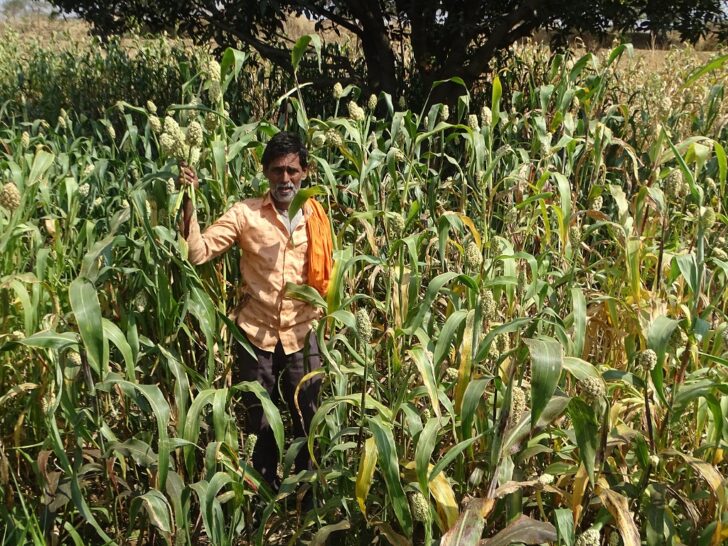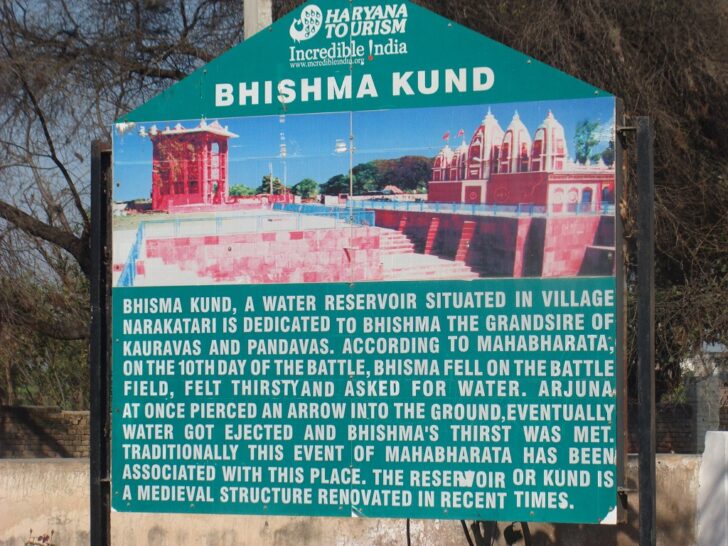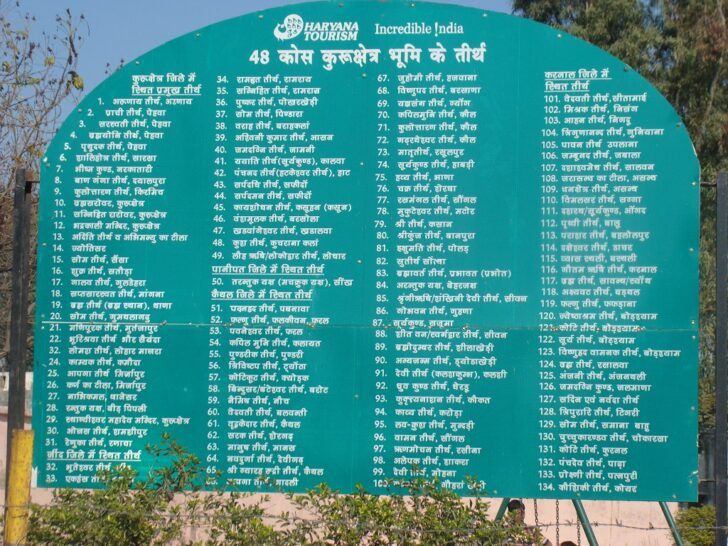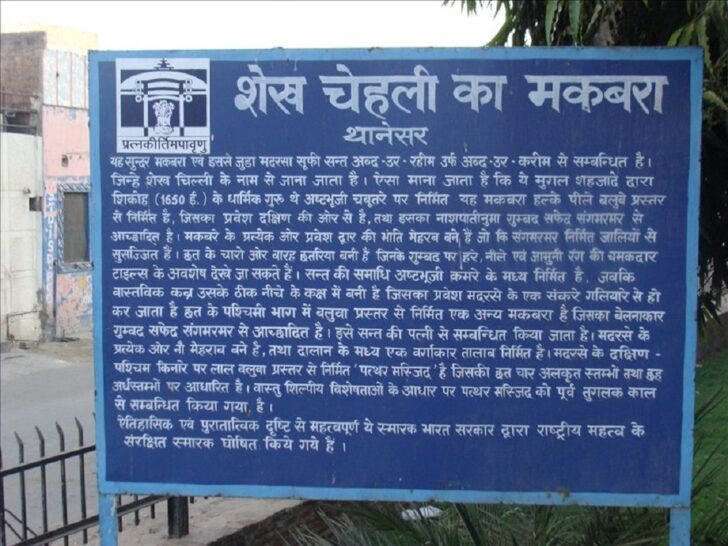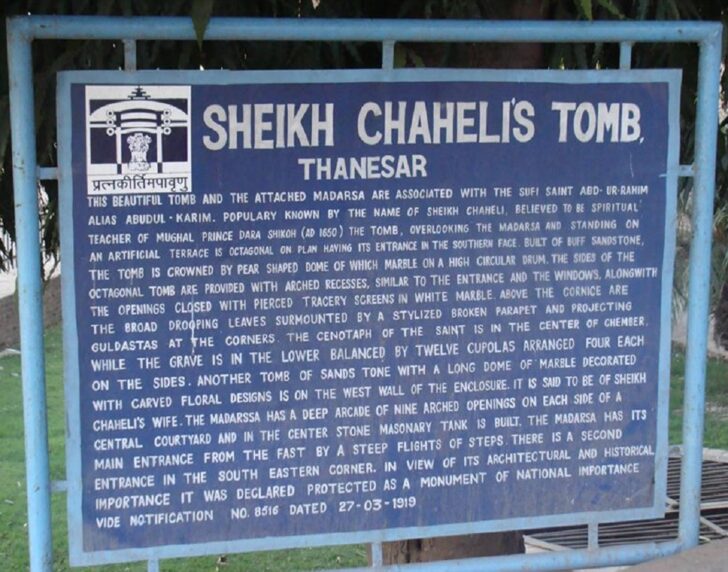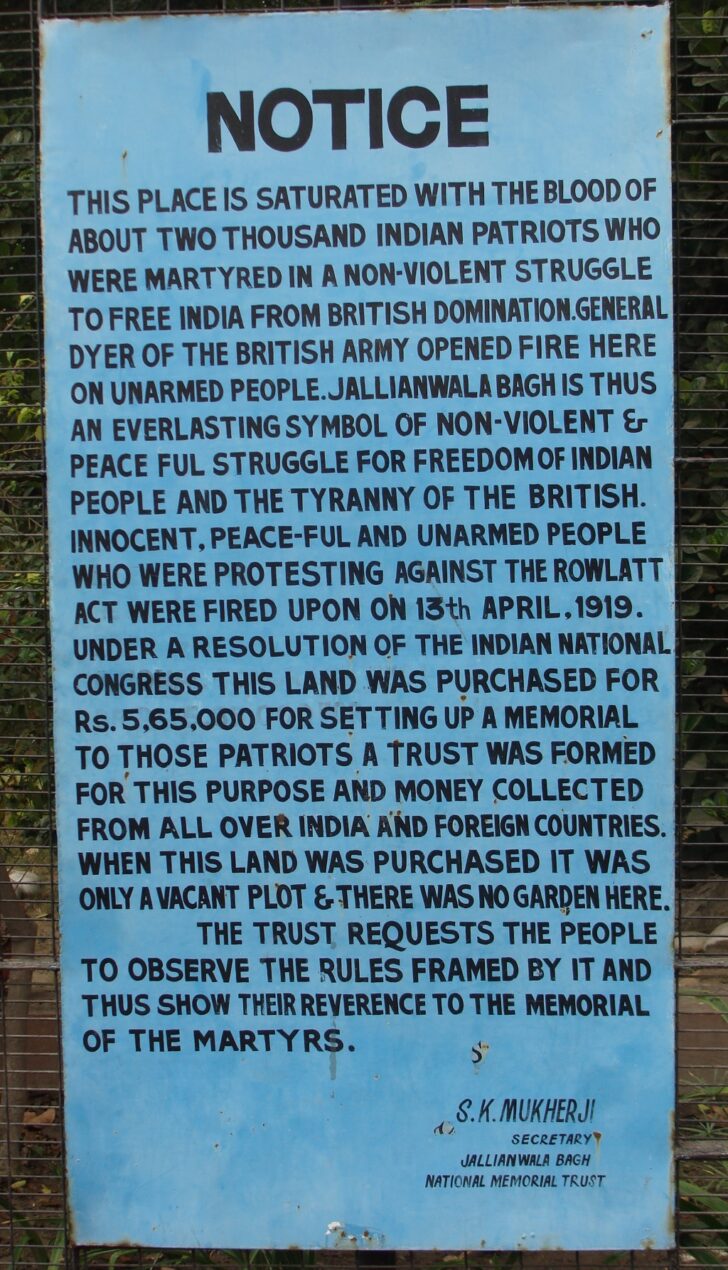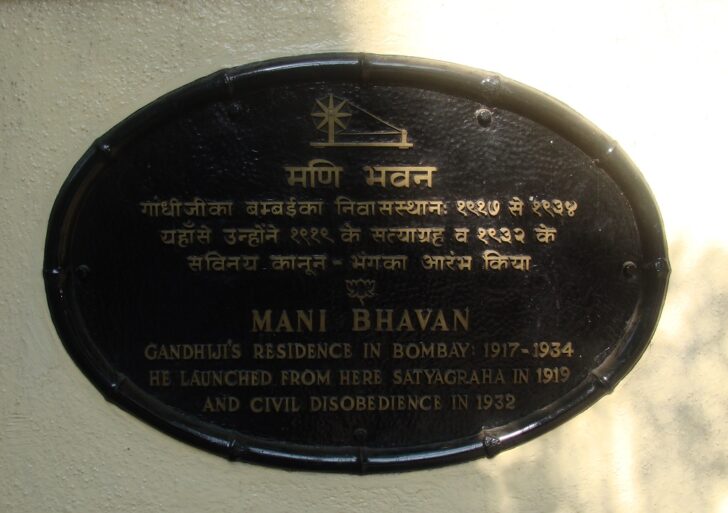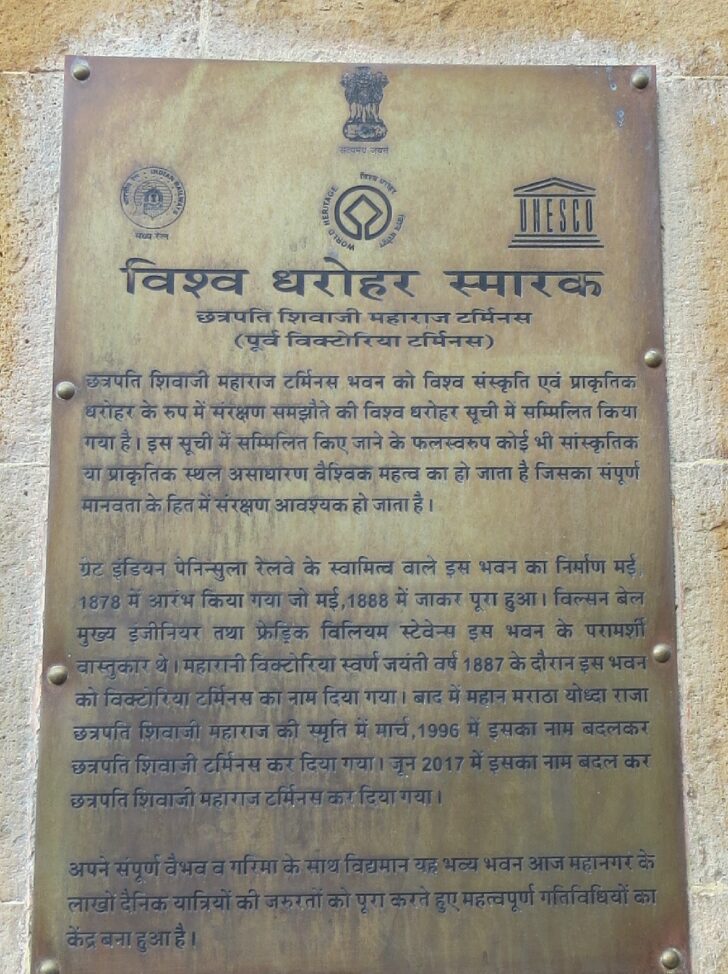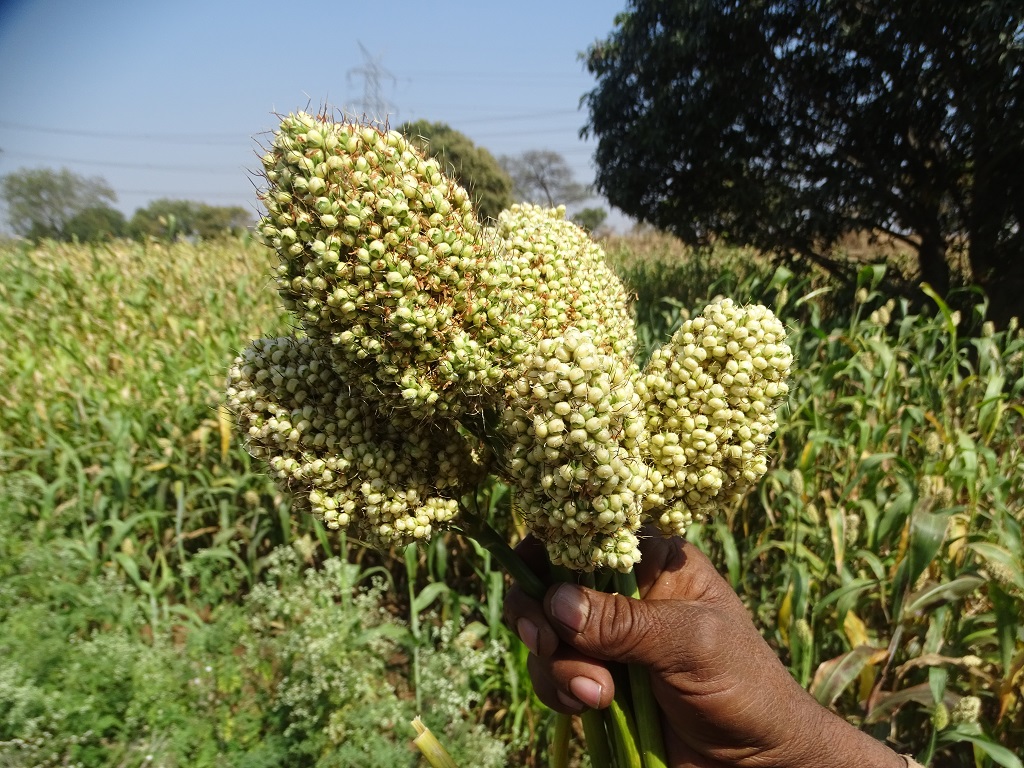
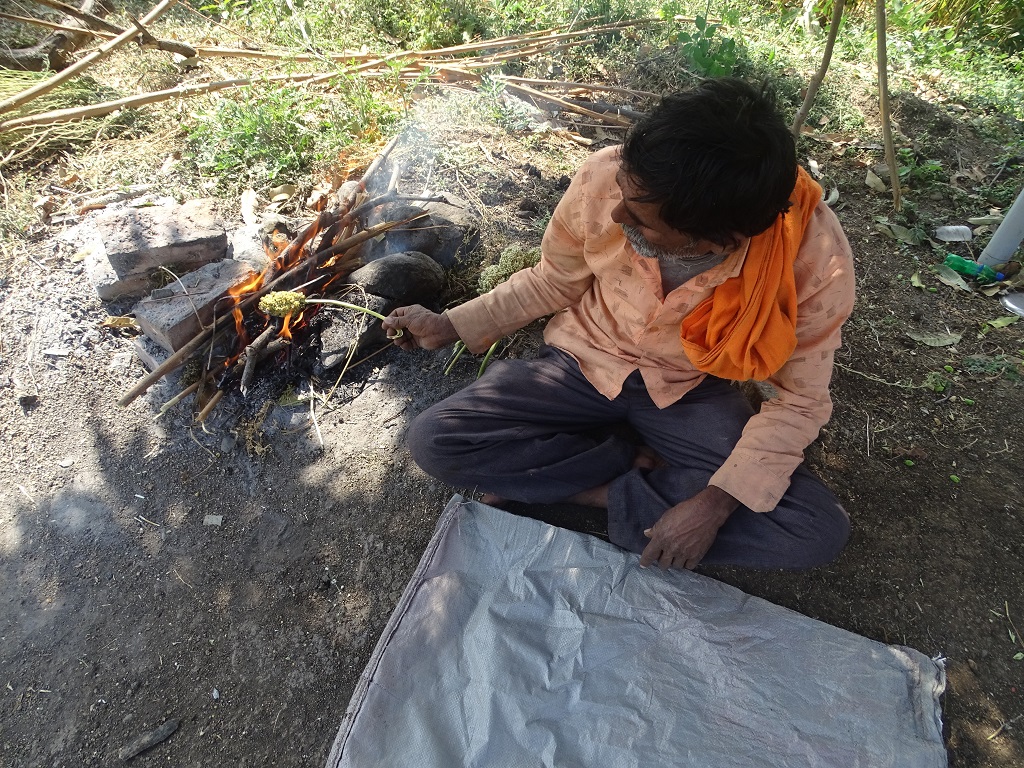
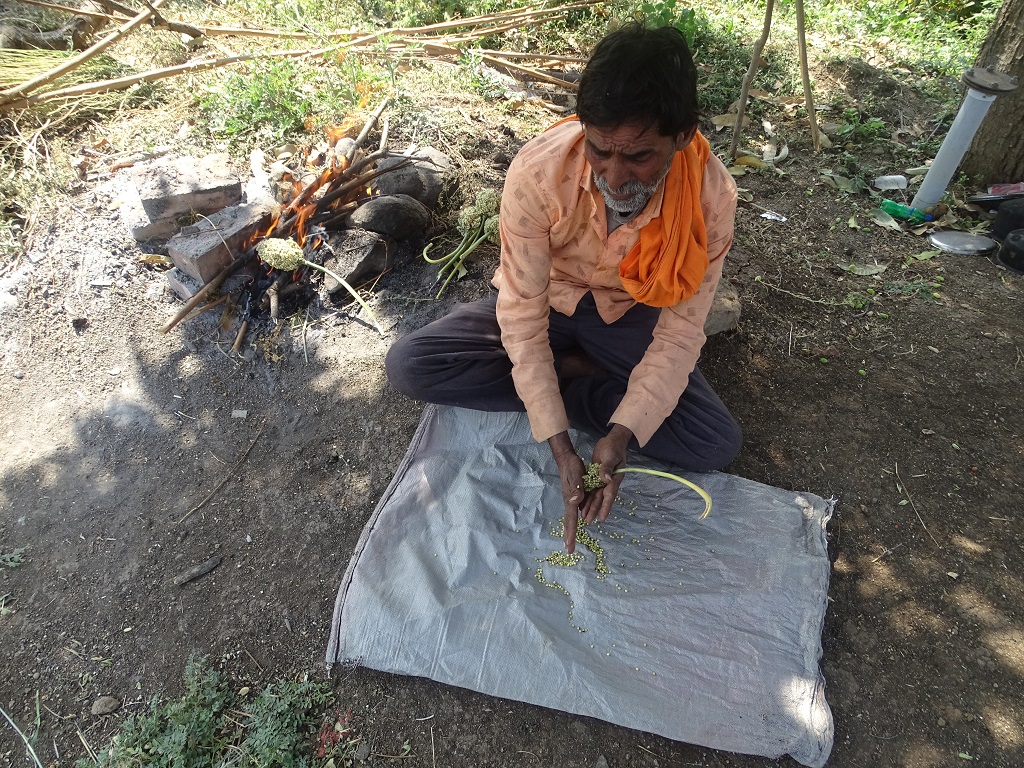
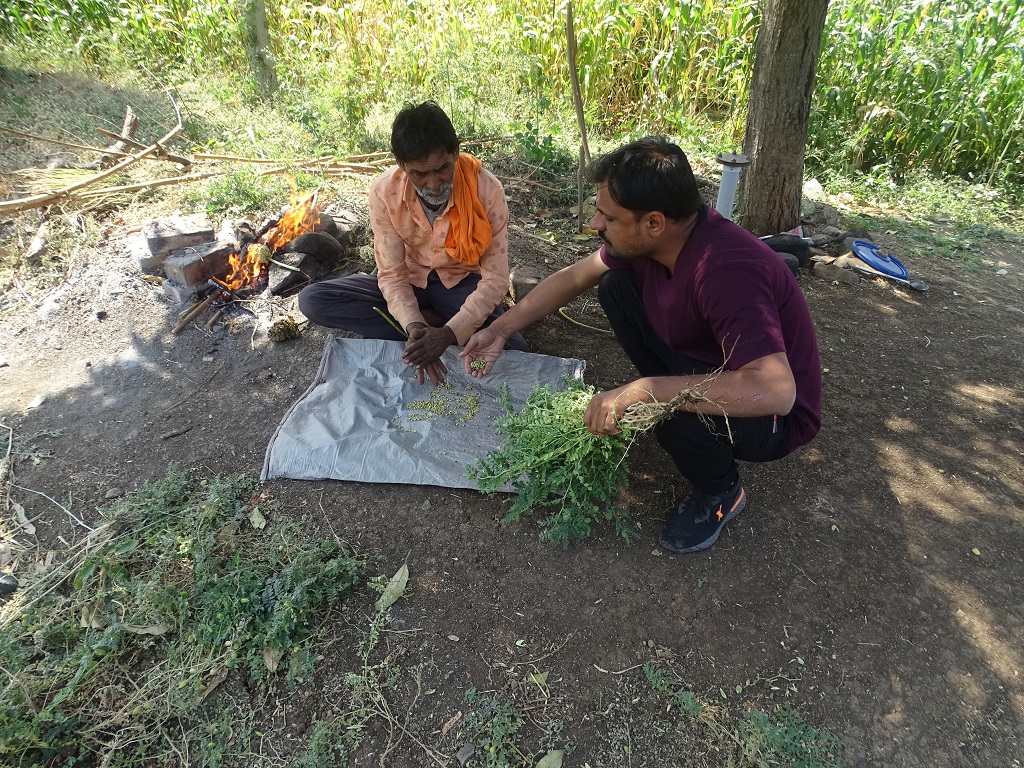
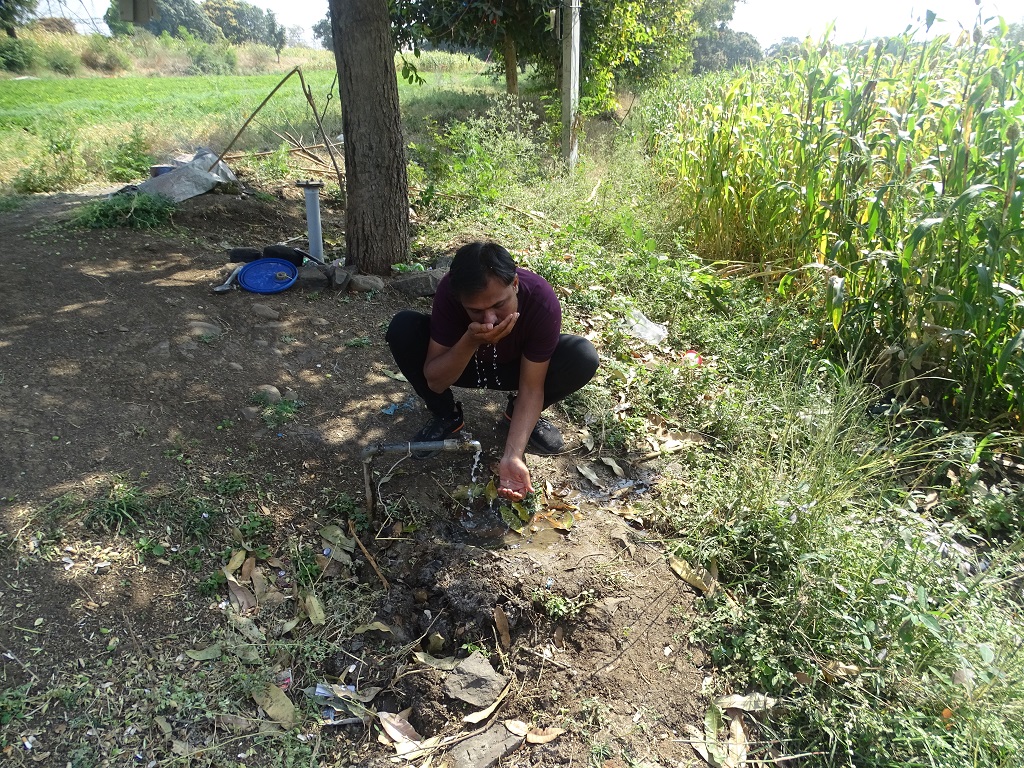
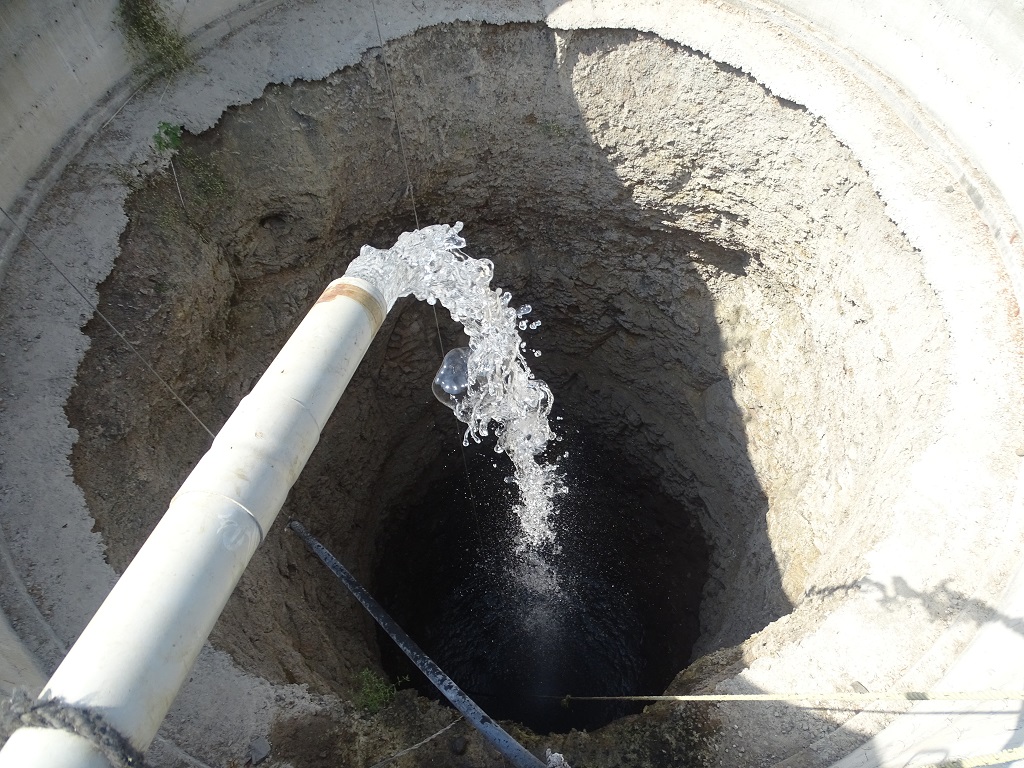
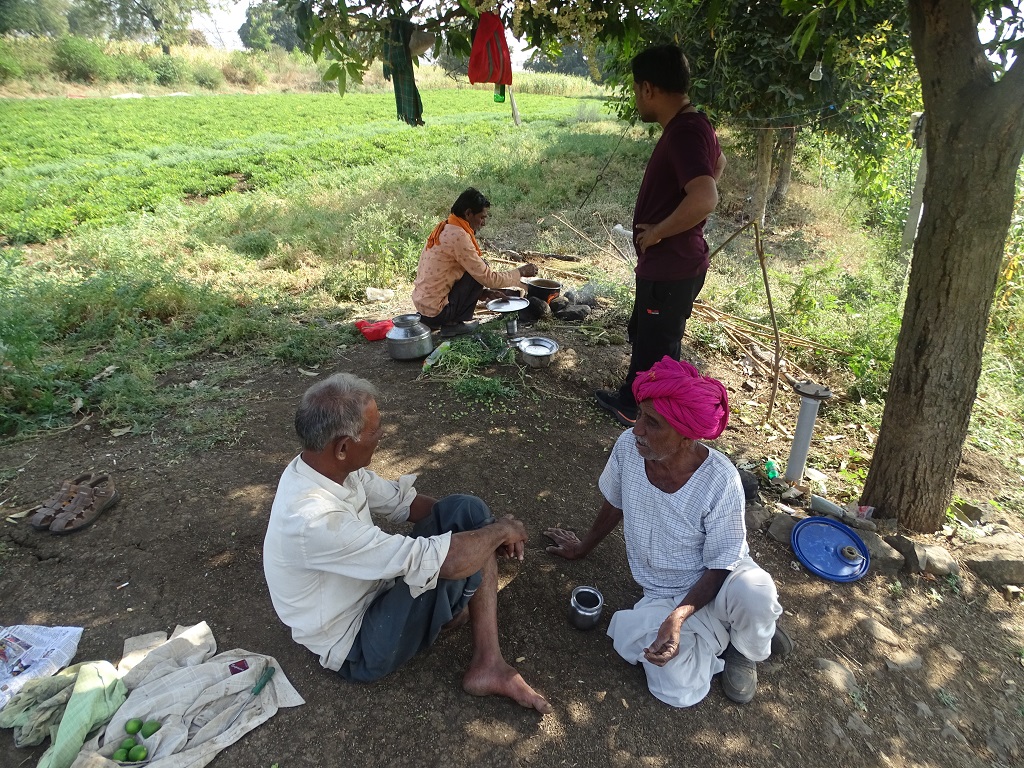
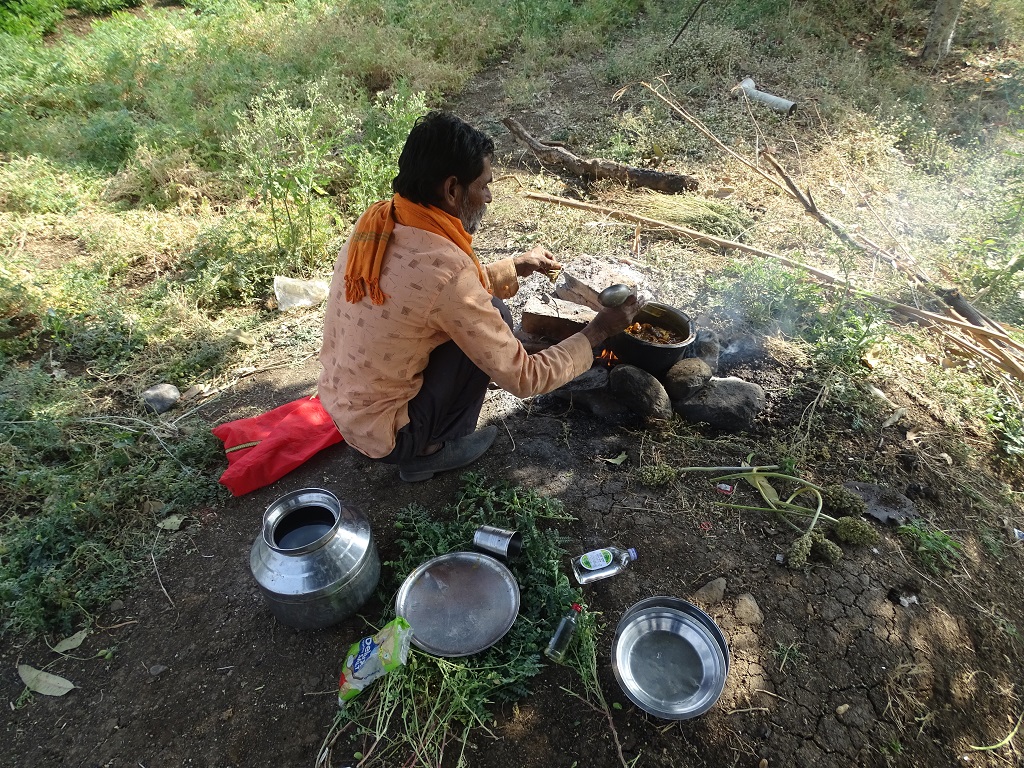
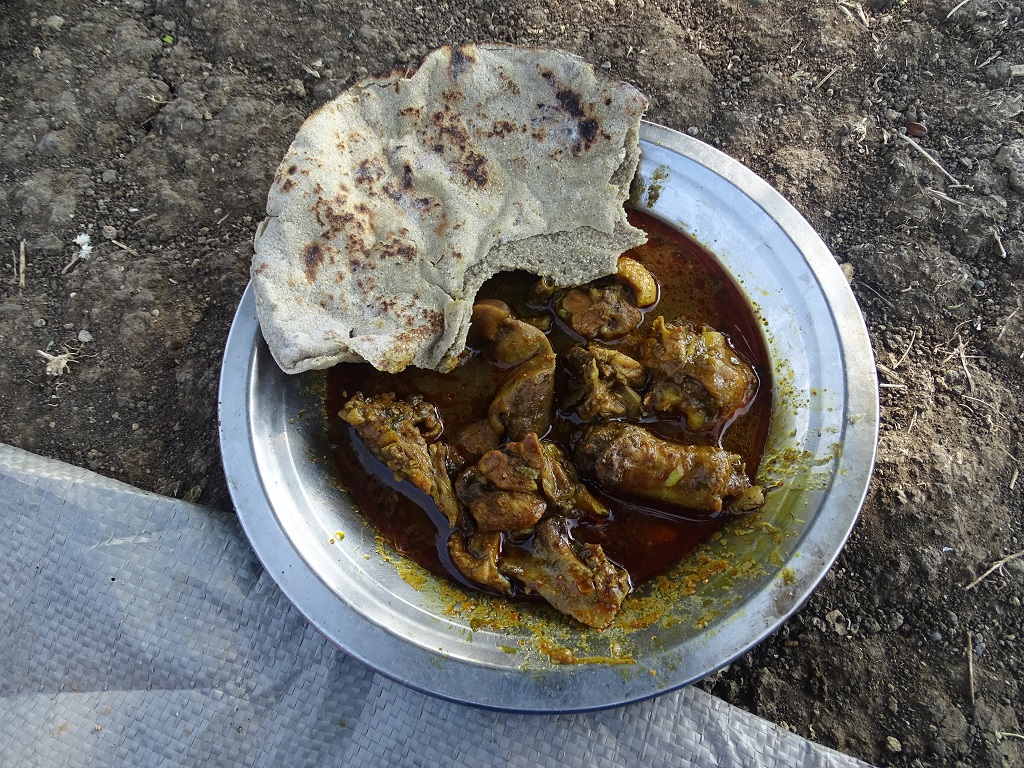
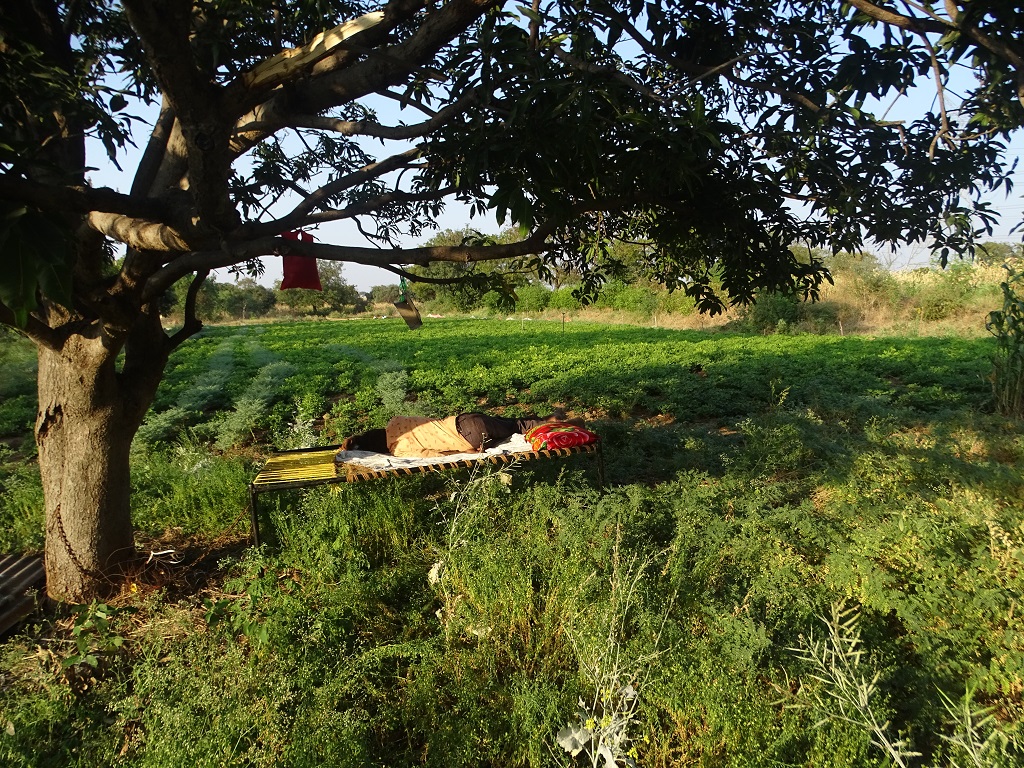 Click to learn more about ‘Hurda’
Click to learn more about ‘Hurda’
The First Time I Attended A Hurda Party near Ambajogai
Pravin my friend from Ambajogai (nearby Latur) in the month of February invited me to attend the Hurda Party at his 7-acre plot.
Have you ever attended a Hurda party yet? – He question.
No – my prompt reply.
These parties are conducted by the farmers on their farms. They welcome guests to experience nature – said Pravin.
Tender fresh Jowar (sorghum) is called Hurda in the Marathi language. Hurda is very tasteful.
Hurda parties typically begin in the late afternoon and may continue till late night. You will enjoy Hurda party. I am here to serve you the sweetest Jowar which you would have never tasted before.
Hurda – the tender and sweet seeds of Jowar freshly plucked off the plant and roasted and served in the farm with garlic or coconut/groundnut chutney, and sometimes with green/red chilies pickles.
Jowar is high in fiber and rich in energy – said Pravin.
It will be a mind-blowing experience to eat sweet ripe Jowar along with a bonfire in the late evening hours.
Hurda is one of the most famous rural farm feasts held in the month of January/February in Maharashtra.
Tempting, isn’t it? – Pravin smiled.
Mango, Tamarind, Neem, Wheat, Onion, Lettuce, Eggplant, Spinach, Cabbage, Jowar, and Bajra are the crops and vegetables grown inside our plot. But to be honest, Wheat here in Ambajogai is an unnatural crop because it requires lots of water to grow. The actual cultivation should be of Jowar and Bajra. Jowar is the main crop of this region. Jowar is planted in the fields in October and harvested in February. And finally, Jowar flour is made in the market to be sold to customers.
Jowar grains are cleaned by hand and then roasted on burning twigs of a tree or cow dung or hot coal ashes. It gives an earthy taste. It requires skill to roast Jowar in a way that it does not become too dry.
Jowar crop grows in most of the regions of Maharashtra. Somewhere in the month of January/February, tender stalks of Jowar are ready in farms. The tender green pulses are roasted and served with chutney.
When people come together to enjoy this in a farm, it is called a Hurda party.
This is a tradition in villages where they celebrate the happiness of the first ripe in the form of Hurda party.
Hurda is nothing but the early stage crop – the tender Jowar.
Lime if added makes the flavour more delicious.
The Hurda parties are a great idea to bring guests together to enjoy the mild sun in winter and eat nutritious Hurda.
The green Jowar is juicy and chewy, with fresh flavours in every bite.
I am coming – my immediate reply. Thanks for the invitation as well as enhancing my knowledge about the Hurda party.
About: Bhishma Kund – Dedicated to the Grandsire of Kauravas & Pandavas
भीष्म कुंड, नरकातारी गांव में स्थित एक जलाशय है जो कौरवों और पांडवों के पितामह भीष्म को समर्पित है। महाभारत के अनुसार, युद्ध के 10वें दिन भीष्म युद्ध के मैदान में गिर पड़े, उन्हें प्यास लगी और उन्होंने पानी मांगा। अर्जुन ने तुरंत एक तीर जमीन में घोंप दिया, अंततः पानी निकल गया और भीष्म की प्यास बुझ गई। परंपरागत रूप से महाभारत की इस घटना को इस स्थान से जोड़ा गया है। जलाशय या कुंड एक मध्ययुगीन संरचना है जिसका हाल के समय में जीर्णोद्धार किया गया है।
(English to Hindi Translation by Google Translate)
Tirthas of 48 Kos Kurukshetra Bhoomi
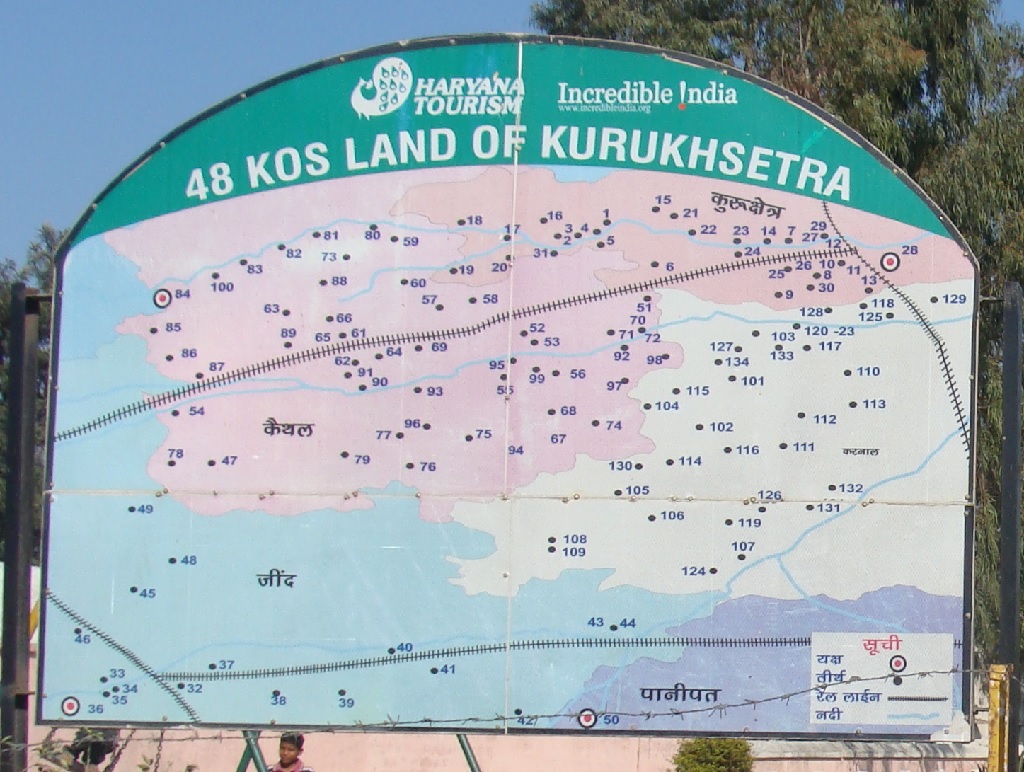 Click to learn more about ’48 Kos Kurukshetra’.
Click to learn more about ’48 Kos Kurukshetra’.
About: Sheikh Chaheli ka Maqbara, Thanesar
Click to learn more about ‘Sheikh Chaheli ka Maqbara’.
About: Sheikh Chaheli’s Tomb, Thanesar
Click to learn more about ‘Sheikh Chaheli’s Tomb’.
About: Jallianwala Bagh – The Memorial of The Martyrs
यह स्थान लगभग दो हजार भारतीय देशभक्तों के खून से रंगा हुआ है जो भारत को ब्रिटिश प्रभुत्व से मुक्त कराने के लिए अहिंसक संघर्ष में शहीद हुए थे। ब्रिटिश सेना के जनरल डायर ने यहां निहत्थे लोगों पर गोलियां चलवा दी थीं। इस प्रकार जलियांवाला बाग भारतीय लोगों की स्वतंत्रता और अंग्रेजों के अत्याचार के लिए अहिंसक और शांतिपूर्ण संघर्ष का एक चिरस्थायी प्रतीक है। 13 अप्रैल, 1919 को रोलेट एक्ट का विरोध कर रहे निर्दोष, शांतिपूर्ण और निहत्थे लोगों पर गोलियां चला दी गईं। भारतीय राष्ट्रीय कांग्रेस के एक प्रस्ताव के तहत यह जमीन 5,65,000 रुपये में खरीदी गई थी उन देशभक्तों के लिए एक स्मारक स्थापित करने के लिए । इस उद्देश्य के लिए एक ट्रस्ट का गठन किया गया और पूरे भारत और विदेशी देशों से धन एकत्र किया गया। जब यह जमीन खरीदी गई थी तो यह केवल एक खाली प्लॉट था और यहां कोई बगीचा नहीं था।
ट्रस्ट लोगों से अनुरोध करता है कि वे उसके द्वारा बनाए गए नियमों का पालन करें और इस प्रकार शहीदों के स्मारक के प्रति अपनी श्रद्धा व्यक्त करें।
एस.के. मुखर्जी
सचिव
जलियांवाला बाग
राष्ट्रीय स्मारक ट्रस्ट
Mani Bhavan – Gandhiji’s Residence in Bombay
Click to learn more about ‘Mani Bhavan‘.
About: Chhatrapati Shivaji Maharaj Terminus (formerly Victoria Terminus) – World Heritage Monument
Chhatrapati Shivaji Maharaj Terminus building has been inscribed upon the world heritage list of the convention concerning the protection of the world culture and natural heritage inscription on this list confirms the exceptional universal value of a cultural or natural site which deserves protection for the benefit of all humanity.
The construction of this building, owned by the Great Indian Peninsula Railway, began in May 1878 and was completed in May 1888. Wilson Bell was the Chief Engineer and Fredric William Stevens was the Consulting Architect. The building was given the name of Victoria Terminus in 1887 during Queen’s Golden Jubilee Celebrations. Later, it was renamed as Chhatrapati Shivaji Terminus in March 1996 in memory of Chhatrapati Shivaji Maharaj, the great Maratha Warrior King. In June 2017 it was renamed again as Chhatrapati Shivaji Maharaj Terminus.
Today this grand building stands out majestically and is an important hub of activities, catering to the needs of millions of commuters in the metropolis.
(Source: Display Board)
